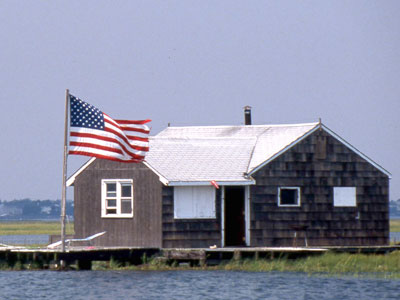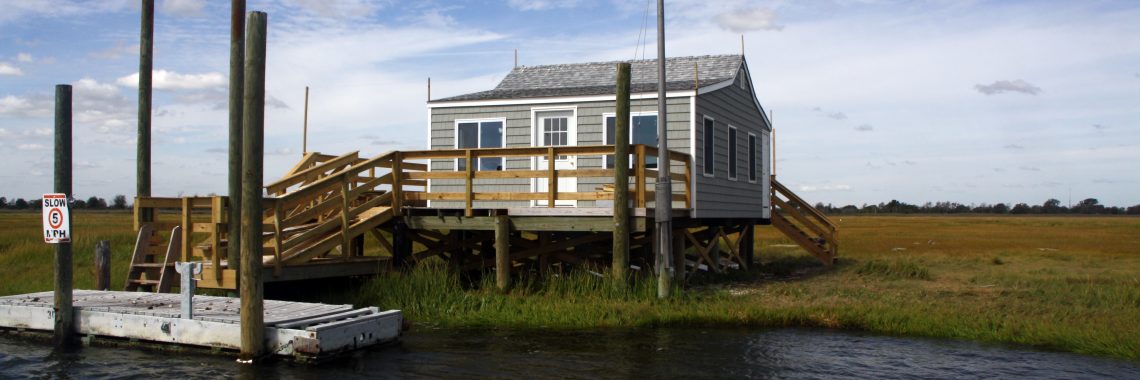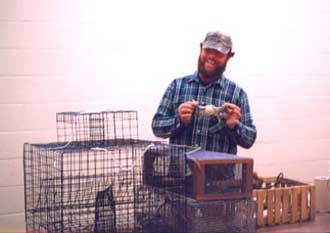Fire Island The history of Fire Island is a long and complicated one, beginning with its Native American settlements. Local indigenous peoples harvested shellfish and finfish including migrating whales, traditions that were shared and passed on to new European immigrants who settled in Bay Shore, Moriches, and other shoreline communities. To protect regional commerce the […]
For information on our upcoming Bay House Tours, visit our Events page. Since 1992, Long Island Traditions has sponsored a bay house tour in Freeport. Bay houses are small shacks that stand on the marshlands that were originally built in the 1700 and 1800s by fishermen, baymen, and duck hunters for shelter while they harvested […]
On The Bay is a book on the bay houses within the Town of Hempstead. Written by Nancy Solomon, executive director of Long Island Traditions, the book documents the architecture of these unique structures originally built by baymen, fishermen and duck hunters in the early 19th century for shelter while clamming, fishing, harvesting salt hay or […]
Filmmaker Glenn Gebhard and Long Island Traditions produced “Baymen,” a documentary on the south shore baymen of Long Island in 1994. Featured in the film are Flo Sharkey, John Buczak, Tom Kuehas and other crabber, clammers, and killey trappers. This 1-hour video explores the history and contemporary hardships faced by baymen, and their future on Long […]
Western Suffolk Western Suffolk: Bay Shore, Oak Beach, Gilgo Beach and Fire Island Bay Shore Settlement of the Bay Shore area began in the early 1700’s when John Mowbray received a royal patent and concluded negotiations with Native Americans for the land on May 9, 1721. The deed specified that Mowbray had possession for the neck […]
Fish Markets & Eateries Waterfront hotels and clam bars have marked the landscape of the south shore since the late 19th century, when more visitors, including estate owners, sportsmen and recreational fishermen began exploring the region, during summers and on weekends. Soon afterwards various investors began building summer hotels, from Long Beach to Patchogue, most […]
Summer Bungalows Since the 1870s out of town residents have built summer homes along the south shore, in order to escape the oppressive heat and high population density of New York City. The most popular communities for summer homes were Freeport, Point Lookout, Long Beach, Babylon, Oak Beach, Fire Island, Bay Shore, Patchogue, Blue Point, […]
Commercial Fishing Since the 1700s there has been an active commercial fishing economy on the south shore. Baymen and fishermen have harvested eels, killies, clams, oysters, scallops, blue claw crabs, bait crabs, fluke and flounder and other marine species. While the fishing economy has declined drastically since 1985, when the brown tide decimated the scallop […]
Baymen’s Homes The earliest European colonists were fishermen and baymen, along with farmers and various tradespeople, all of whom depended on each other for their livelihoods. They settled throughout Long Island, with English settlers living primarily on the East End, and Dutch settlers in the western areas. By the mid-1700s English and Dutch families coexisted […]
Maritime Programs One of our main goals as an organization is to help preserve the traditions of commercial and recreational fishermen. Since the 1700s Long Island’s history has centered on the bays, rivers, oceans and estuaries. Baymen have harvested clams, oysters, eels and killies for their living. They have built garveys and duck boats, bay […]



